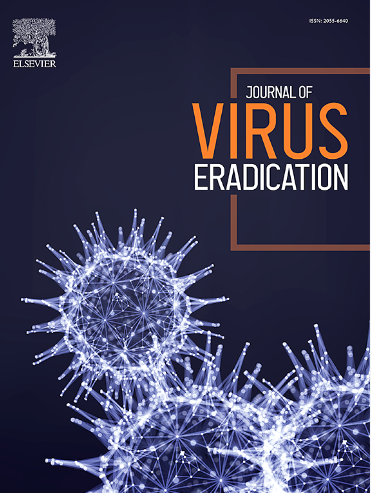Dynamic changes in immune cell subsets in blood and lymph node over the course of acute HIV infection
IF 2
4区 医学
Q2 IMMUNOLOGY
引用次数: 0
Abstract
Innate, cellular and humoral immunity in acute HIV infection (AHI) play crucial roles in dictating immunological and pathological outcomes. However, understanding immune cell dynamics in different compartments during AHI is limited. In this study, we characterized immune cells from matched blood and lymph node samples in the RV254 Thai AHI cohort, the RV304 Thai chronic HIV infection cohort, and HIV-negative individuals, using flow cytometry. Our results showed a significant loss of the CD4:CD8 ratio in both PBMCs and LNMCs during AHI. Similarly, we observed increased immune activation of CD4+ and CD8+ T cells in both blood and lymph node compartments during AHI. In contrast, we found no increase in T follicular helper cells (Tfh) and a lack of association between circulating Tfh and lymph node Tfh during AHI. Furthermore, early B cell depletion, particularly in resting memory B cells, was observed in blood but not in lymph nodes during AHI. Additionally, during AHI, plasmacytoid dendritic cell activation was increased in lymph nodes but not in blood. These findings suggest that certain immune cell phenotypes and dynamics are unique in lymph nodes compared to blood during AHI. Understanding the immune cell alteration in these compartments during AHI may help define the mechanisms leading to lack of immune control in natural HIV infection.
急性HIV感染过程中血液和淋巴结免疫细胞亚群的动态变化
急性HIV感染(AHI)的先天、细胞和体液免疫在决定免疫和病理结果中起着至关重要的作用。然而,对AHI期间不同区室免疫细胞动力学的了解是有限的。在这项研究中,我们使用流式细胞术对来自RV254泰国AHI队列、RV304泰国慢性HIV感染队列和HIV阴性个体的匹配血液和淋巴结样本的免疫细胞进行了表征。我们的结果显示,在AHI期间,pbmc和lnmc的CD4:CD8比值显著下降。同样,我们观察到AHI期间血液和淋巴结室中CD4+和CD8+ T细胞的免疫激活增加。相反,我们发现在AHI期间,T滤泡辅助细胞(Tfh)没有增加,循环Tfh和淋巴结Tfh之间缺乏关联。此外,AHI期间在血液中观察到早期B细胞耗竭,特别是静息记忆B细胞耗竭,但在淋巴结中未见。此外,AHI期间,淋巴结浆细胞样树突状细胞活化增加,但血液中没有。这些发现表明,与AHI期间的血液相比,淋巴结中的某些免疫细胞表型和动力学是独特的。了解AHI期间这些区室中免疫细胞的改变可能有助于确定导致自然HIV感染中缺乏免疫控制的机制。
本文章由计算机程序翻译,如有差异,请以英文原文为准。
求助全文
约1分钟内获得全文
求助全文
来源期刊

Journal of Virus Eradication
Medicine-Public Health, Environmental and Occupational Health
CiteScore
6.10
自引率
1.80%
发文量
28
审稿时长
39 weeks
期刊介绍:
The Journal of Virus Eradication aims to provide a specialist, open-access forum to publish work in the rapidly developing field of virus eradication. The Journal covers all human viruses, in the context of new therapeutic strategies, as well as societal eradication of viral infections with preventive interventions.
The Journal is aimed at the international community involved in the prevention and management of viral infections. It provides an academic forum for the publication of original research into viral reservoirs, viral persistence and virus eradication and ultimately development of cures.
The Journal not only publishes original research, but provides an opportunity for opinions, reviews, case studies and comments on the published literature. It focusses on evidence-based medicine as the major thrust in the successful management of viral infections.The Journal encompasses virological, immunological, epidemiological, modelling, pharmacological, pre-clinical and in vitro, as well as clinical, data including but not limited to drugs, immunotherapy and gene therapy. It is an important source of information on the development of vaccine programs and preventative measures aimed at virus eradication.
 求助内容:
求助内容: 应助结果提醒方式:
应助结果提醒方式:


